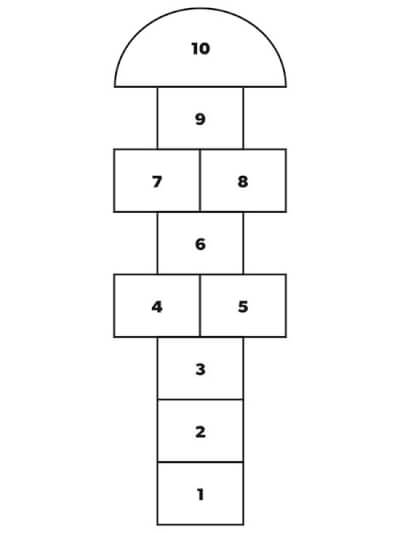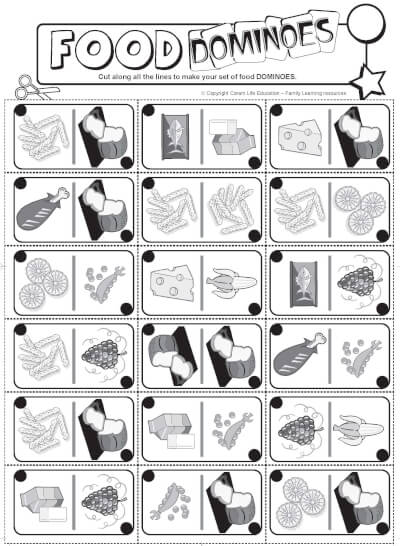Being my Best - 5 to 7 year-olds
What your child will be learning about…
- Developing a positive attitude to learning and building a growth mindset.
- Understanding that there are things they can do to help them bounce back when things go wrong.
- Keeping physically healthy - focusing on healthy eating.
What you can talk about together…
Growth Mindset (for activities 1 and 2)
- What sort of things can you do now that you couldn’t when you were a baby?
- Was it always easy to learn to do those things?
- What did you have to do in order to make it easier? (Keep practising, not give up, try to learn from mistakes, get ideas or help from other people etc.)
- What would you like to improve at?
Healthy Eating (for activities 3 and 4)
- What types of fruit and vegetables can you name?
- Which are your favourite ones?
- Why do we need to eat fruit and vegetables? (Their vitamins help us to keep healthy all over).
- Why do we need to eat a variety - that's lots of different kinds of fruit and vegetables? (Different ones do different things in the body - eating them helps us to have a balanced diet).
What you can do together…
Activity 1 - You can do it!
(You'll need a soft toy, soft ball or beanbag if doing this next activity indoors. If you have an outdoor space you can use a ball.)
Start by looking together at the picture of the Learning Line. Your child may have seen this before at school and may remember it. If so, ask your child to explain the different stages of learning. This isn't a test for your child! Just a way of encouraging them to remember the stages and show you. If the Learning Line is new - or they're struggling to remember - then work through it together.
Explain that you're both going to work on a throwing and catching challenge. Work as a team throwing your soft object to each other (you can vary the degree of difficulty according to your child's current level of skill).
Use these key questions to discuss the learning process:
- Do we always catch the object or sometimes drop it?
- Why don’t we always catch it? (Our brain and body is still learning how to do this.)
- What are the things that make it difficult? (Not having done before, the speed of the object, not reacting quickly enough etc.)
- What encouraging phrases can we say to each other - or even to ourselves - to help us keep going?
If your child isn't enjoying this game, maybe ask them if there's something else they'd like to learn or to improve at by practising.
If your child is enjoying it - or a similar challenge - you could repeat the activity for a few minutes each day and record their progress (and yours!) Remind your child not to be too concerned if they seem to get worse and point to stage 2 of the Learning Line, where things sometimes get worse before they improve! It's all part of learning and practising bouncing back.
Activity 2 - Something new
Learn a new game together. If you have a board game that your child hasn’t played before try playing first without reading the instructions first. How did that go? What do we need to do first?
Ask your child how they feel after learning and playing it.
If you don’t have a board game that’s not been played before you could try a card game, or a game that doesn’t need any equipment, such as Simon Says. Or you could play a more physical game like hopscotch - see Harold’s Daily Diary entry for Wednesday 24th February, 2021 for how to play this. You can have a bit of fun reading Harold the giraffe’s diary at the same time!

If you enjoyed this - or if you want to do something different, try this Resilience board game from Anna Freud Mentally Healthy Schools. If you don't have a printer for this, you could just read the cards together and ask your child to think about which answer will help a person to bounce back.
For more information about Growth Mindset and how it can help your child, have a look at this article from the BBC's cbeebies website.Activity 3 - Food dominoes
Talk about how fruit and vegetables help us to be healthy all over because of the different vitamins that they give us. Have a look at the different fruit and veg on 5 a day chart.
For more ideas, download these 5 a day activities from the British Nutrition Foundation.
Finally, here's a game to help your child understand that there are different types of food that we need, besides fruit and vegetables. The Food Dominoes cards have examples:.
- Pasta, bread, rice - carbohydrates to give us energy.
- Meat and fish - protein, to build our muscles.
- Cheese and milk - dairy foods, to help our teeth and bones be strong.
- Fruit and vegetables - to be healthy all over!

Activity 4 - I can eat a rainbow!
Create a rainbow of fruits and vegetables. Make a rainbow from different coloured strips of paper, or just use coloured pencils/felt-tips. With your child, draw or paint fruits and vegetables to stick on each coloured stripe e.g. strawberries for the red stripe, peas for the green. Alternatively, find pictures of fruit and veg in magazines or from empty food packaging to stick onto your rainbow of food collage.
You can use any vegetables that you have - including tinned vegetables - to make a healthy soup and encourage children to eat the recommended 5-a-day portions of fruit and veg. Here's a picture of some colourful fruit and veg to give your child some ideas.SCARF values I thought about...
Which of the SCARF values did the activities include?
You can point to these, or if you're making a SCARF journal you can write them down and tick those you did. There's no right or wrong answer! It's up to you to decide!
Safety
Caring
Achievement
Resilience
Friendship
About SCARF at Home activities
Information for parents and carers before you start using the SCARF at Home activities
Your child's school is sharing some activities with you to help keep children happy and healthy while they're at home. The activities support children's PSHE (Personal, Social, Health and Economic) education and have been provided by the UK's largest children's charity specialising in children's health and wellbeing, Coram Life Education and SCARF.
Coram Life Education and SCARF help schools to teach children valuable life skills needed to keep them happy, healthy and safe.

